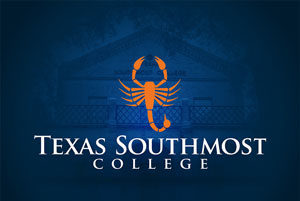
For over two years, Texas Southmost College has been working on developing Open Educational Resource (OER) courses that have already translated to cost savings for students and dual enrollment partners.
Open Educational Resources as defined by TSC Associate Vice President of Academic Success Angelica Fuentes are teaching, learning, or research resources that are in the public domain or have been released under an intellectual property license that permits the free use, adaptation, and redistribution of the resource by any person.
In other words, through the creation of these courses, TSC students and dual enrollment partners no longer need to spend funds on purchasing textbooks or other required course material.
“We began creating these courses for two reasons: cost savings and time,” said Fuentes. “Over the last couple of years, we have seen OER courses grow in popularity among several groups at TSC and with those TSC serves.”
Since the initiation of OER courses in fall 2019, the percentage of sections designated as OER has increased from 3.7% to 50% over a two-year period.
The vast majority of dual enrollment sections have also adopted an OER approach.
“We’ve left it up to each faculty member to decide if transitioning to an OER course is for them,” said Fuentes. “We’re pleased to see that more are realizing the benefits of these courses for themselves and their students.”
According to Fuentes, textbook prices can range from $60 to upward of $300 depending on the course, making OER sections popular in general studies, arts and humanities, and science, where textbooks mostly come with a high price tag.
Dirk Yarker, TSC interim department chair for Arts, History and Business and U.S. History instructor, has seen the benefits of both savings and time for his students.
“Because textbooks can be costly, every semester, we see students struggle to purchase books,” said Yarker. “And as a result, books are not purchased immediately causing us as faculty a delay in assigning reading or assignments for at least a week or two.”
He added that transitioning their sections to include OER courses has been a solution to this issue.
“We no longer have delays because we are no longer relying on physical textbooks,” said Yarker. “Everything our students need for the semester is available on Canvas, our learning management system, starting the first day of class. This is a huge advantage and will be moving forward.”
Fuentes said the transition can take at least one semester because of the research, resource selection, and reviews it takes to implement an OER course.
“OER courses do not compromise the quality of education that our students receive,” she said. “All resources selected by faculty go through an extensive vetting process before approved for use, ensuring that our students are receiving the best content and that we are not infringing on any copyright laws.”
Review of OER materials goes through TSC’s Librarian Nancy Bond.
“This has taken a lot of effort and coordination from everyone involved,” said Bond. “We look closely at all content to make sure that it is of the highest quality and that all links work properly so that students have everything they need.”
For TSC Criminal Justice student Christopher Arellano OER courses have been a lifesaver. He is currently enrolled in OER course English 1302, or Composition II.
“There will always be financial stressors for students like me and these classes help relieve that burden,” said the 21-year-old. “I’ve been able to move forward with my education, save money and focus more on my studies. This is a great opportunity that is making a college education more accessible.”
Fuentes said the use of OER materials has been an advantage across the board.
“The percentage of students like Arellano who enroll in an OER course will grow every semester,” she said. “And to join the ranks of other top colleges and universities using this method is a huge advantage to the students of our region.”
